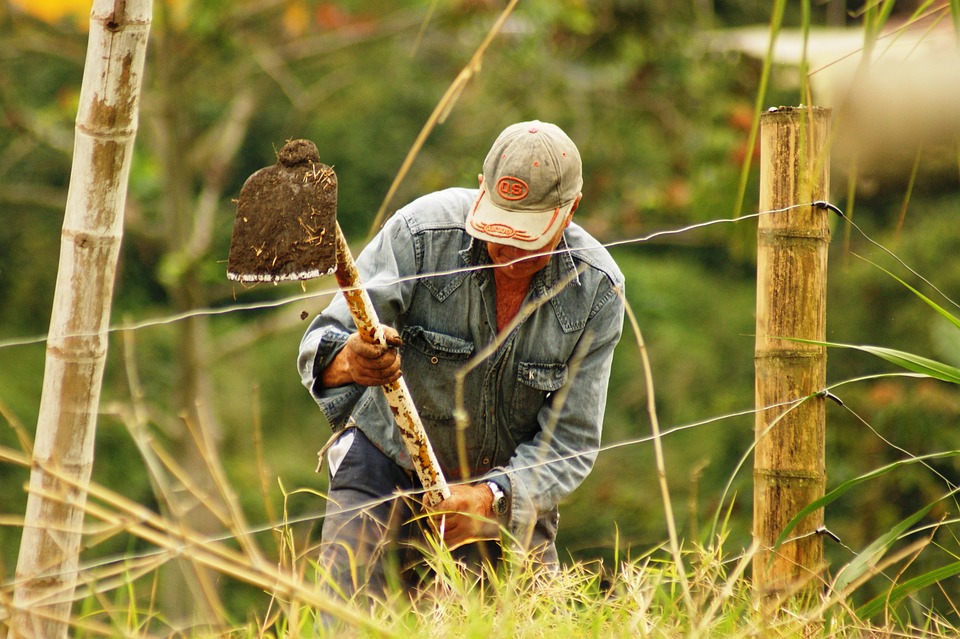La Declaración de los derechos del campesinado y la resolución de conflictos en áreas naturales protegidas en Colombia
Barra lateral del artículo

Cómo citar
Altmetrics
Detalles del artículo

Esta obra está bajo una licencia internacional Creative Commons Atribución 4.0.
Se solicita a los autores que diligencien el documento de cesión de derechos de autor sobre el artículo, para que sea posible su edición, publicación y distribución en cualquier medio y modalidad: medios electrónicos, CD ROM, impresos o cualquier otra forma, con fines exclusivamente científicos, educativos y culturales
- La obra pertenece a UNIMINUTO.
- Dada la naturaleza de UNIMINUTO como Institución de Educación Superior, con un modelo universitario innovador para ofrecer Educación de alta calidad, de fácil acceso, integral y flexible; para formar profesionales altamente competentes, éticamente responsables y líderes de procesos de transformación social, EL CEDENTE ha decidido ceder los derechos patrimoniales de su OBRA, que adelante se detalla para que sea explotado por ésta
- El querer de EL CEDENTE es ceder a título gratuito los derechos patrimoniales de la OBRA a UNIMINUTO con fines académicos.
Contenido principal del artículo
Resumen
Las políticas ambientales y de conservación de los ecosistemas naturales en Colombia, han pretendido excluir de estas áreas a las poblaciones humanas y sus actividades económicas. En áreas protegidas en Colombia (AP) habitan comunidades campesinas, afrodescendientes e indígenas que luchan por permanecer en sus territorios donde han construido su vida y su cultura. En este contexto de conflictos sociales relacionados a las áreas naturales protegidas, la “Declaración de las Naciones Unidas sobre los Derechos de los Campesinos y de Otras Personas que Trabajan en las Zonas Rurales” representa una oportunidad para la gestión de las AP, orientar insumos en la resolución de conflictos desde una perspectiva intercultural. La investigación recoge los antecedentes que dieron origen a la Declaración, los actores y escenarios de construcción de ésta. Plantea los elementos problema derivados de la gestión de las AP, las condiciones de vulnerabilidad y exclusión del campesinado y las debilidades en los instrumentos internacionales para defender sus derechos. Hace una justificación del proyecto a la luz de la construcción de paz, en el contexto de la implementación del Acuerdo de la Habana. Es una investigación de tipo cualitativo, desde un enfoque histórico hermenéutico, para el análisis crítico de la Declaración y un Estudio de Caso del Área Protegida Parque Nacional Natural PNN el Cocuy, en el cual estaba descrito un conflicto ambiental que involucra una comunidad campesina. Los resultados de la investigación permiten evidenciar los ámbitos de aplicación de la Declaración como instrumento jurídico internacional de triple función: como generador de nuevas aproximaciones jurídicas frente a los derechos del campesinado en Colombia, para concretar /culminar procesos de política pública, especialmente en AP y, puede ser declarativa del derecho consuetudinario ligado al campesinado a partir del reconocimiento de éste como un sujeto histórico que se constituye a partir de múltiples dimensiones. Frente a la gestión de las AP, se evidencia su relación con un enfoque ecosistémico y el aporte para la gobernanza desde una perspectiva intercultural, básicos para la construcción de mecanismos de incidencia y desarrollo de capacidades en torno a la resolución de conflictos en AP y la defensa de los derechos del campesinado.
Referencias
Andrade, Angela, and Roberto Vides. 2010. “Enfoque Ecosistémico y Políticas Públicas: Aportes Para La Conservación de La Biodiversidad y La Adaptación a Cambio Climático En América Latina.” Instituto Interamericano Para La Investigación Del Cambio Global. https://static.weadapt.org/knowledgebase/files/944/5051bf92c2f8aandrade-vides-iai-3.pdf.
De-Pourcq, Kobe, Evert Thomas, Patrick Van Damme, and Tomás Léon-Sicard.2017. “Análisis de Los Conflictos Entre Comunidades Locales y Autoridades de Conservación En Colombia. Causas y Recomendaciones.” Gestión y Ambiente 20 (1): 122–39. https://doi.org/10.15446/ga.v20n1.71174.
Dejusticia. 2018. “La Declaración de Derechos Campesinos Sí Podría Proteger Al Campesinado Colombiano.” Dejusticia. December 19, 2018. https://www.dejusticia.org/la-declaracion-de-derechos-campesinos-si-podriaproteger-al-campesinado-colombiano/.
Durán, Carlos Andrés. 2009. “Gobernanza En Los Parques Nacionales Naturales Colombianos: Reflexiones a Partir Del Caso de La Comunidad Orika y Su Participación En La Conservación Del Parque Nacional Natural Corales Del Rosario y San Bernardo.” Revista de Estudios Sociales, 60–73.
Guerrero, Eduardo, Sandra Sguerra, and César Rey, eds. 2007. Áreas Protegidas En América Latina. De Santa Marta 1997 a Bariloche 2007. Bogotá: Parque Naciolanes Naturales de Colombia y Comité Colombiano UICN. ICANH. 2017. “Elementos Para La Conceptualización de Lo ‘Campesino’ En
Colombia Documento Técnico Elaborado Por El ICANH.” Dejuaticia. 2017. https://www.dejusticia.org/wp-content/uploads/2017/11/Conceptotécnico-del-Instituto-Colombiano-de-Antropología-e-Historia-ICANH.pdf.
La Vía Campesina. 2015. “Una Declaración de Los Derechos Campesinos.” La Vía Campesina Movimiento Campesino Internacional. 2015. https://viacampesina.org/es/una-declaracion-de-los-derechos-campesinos/.
Monroy Cabra, Marco Gerardo. 2011. Ensayos de Teoría Constitucional y Derecho Internacional. Bogotá: Universidad del Rosario.
Montañez Gómez, Gustavo, Julio Carrizosa Umaña, Normando Suárez Fernández, Ovidio Delgado Maecha, and Julián Arturo Lucio. 2001. Espacio y Territorios. Razón, Pasión e Imaginarios. Bogotá: Universidad Nacional de Colombia.
Naciones Unidas. 2017. “Traducción No Oficial Del Documento A/HRC/WG.15/4/3 – Fuentes Normativas y Fundamentos Subyacentes Al Proyecto de Declaración Sobre Los Derechos de Los Campesinos y Otras Personas Que Trabajan En Las Zonas Rurales.” Roma.
———. 2018. “Declaración de Las Naciones Unidas Sobre Los Derechos de Los Campesinos y de Otras Personas Que Trabajan En Las Zonas Rurales.” In Resolución Aprobada Por La Asamblea General El 17 de Diciembre de 2018. https://undocs.org/es/A/RES/73/165.
Naciones Unidas - Conferencia de las Partes. 1992. “Convenio Sobre La Diversidad Biológica.” In . Río de Janeiro.
Ordoñez-Pachón, María Paula. 2016. “Diagnóstico de Los Impactos Ambientales Causados Por Diferentes Actores Sociales Sobre Los Páramos Del Parque Nacional Natural El Cocuy, Colombia.” Universidad Militar Nueva Granada.
Paredes-Leguizamón, Gisela. 2018. Integrando Las Áreas Protegidas Al Ordenamiento Territorial: Caso Colombia. Bogotá: PNNC y UICN.
Parques Nacionales Naturales de Colombia. 2019. Hacia Una Política Para El Sistema Nacional de Áreas Protegidas de Colombia Visión 2020-2030 SINAP Versión 3.0. Bogotá.
Secretaría del Convenio sobre la Diversidad Biológica. 2004a. Enfoque Por Ecosistemas. Montreal.
———. 2004b. Programa de Trabajo Sobre Áreas Protegidas (Programas de Trajabo Del CDB). Montreal. Unión Internacional para la Conservación de la Naturaleza UCIN. 2008. “Directrices Para La Aplicación de Las Categorías de Gestión de Áreas Protegidas.”
UPTC. 2017. “Informe Final - Convenio No. 004 Del 15-12-2017.” Tunja.




